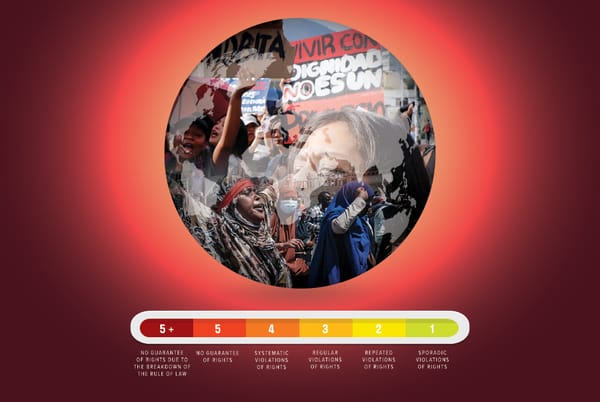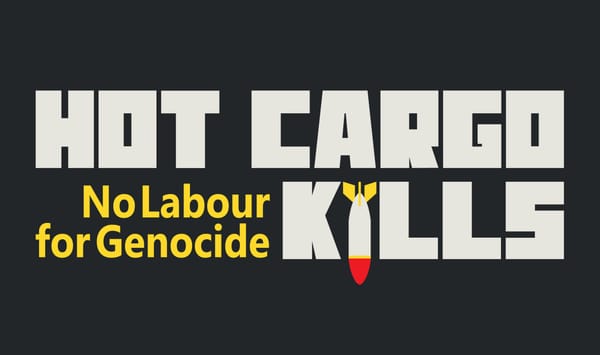
In the first edition of Class Struggle, I offered some suggestions for what a just reopening of the post-COVID economy that puts workers first should look like, including universal access to paid sick days. Several weeks later we’re still mired in lockdown, with new daily cases in several provinces exceeding those at the height of the first wave.
The new variant-fueled third wave has further highlighted just how important access to paid sick days is for workers. Yet, despite persistent pressure from labour advocates and public health officials, provincial governments have fought vociferously against ensuring that all workers are able to take paid time off. Forcing workers to choose between exposing themselves and others to the virus and losing what is often vital pay seems to be a consensus position of political parties across Canada.
A lack of paid sick days — like other issues related to work and labour — is made all the worse by the provincial regulation of employment standards. Canada’s division of legislative power grants jurisdiction over “property and civil rights,” which includes employment, to the provinces. In all but a few industries falling under federal jurisdiction (such as interprovincial rail and road transportation, banking, airlines, nuclear power and mining, etc.), various provincial statutory laws set minimum conditions for employment, such as minimum wages, maximum working hours, and access to leaves.
These various minimum employment standards regimes can vary considerably between provinces. By an accident of geography, non-unionized workers who rely on minimum standards legislation as their only protection at work can end up with significantly different rights on the job.
This problem of provincial jurisdiction over employment law becomes glaring when labour advocates try to push governments to address the widespread lack of paid sick days.
According to the Partnership for Work, Health and Safety at the University of British Columbia, 58 per cent of workers across Canada have no employer-provided paid sick leave benefits, ranging from a low of 50.7 per cent in Newfoundland and Labrador to a high of 61.4 per cent in British Columbia.
As expected, access to paid sick leave benefits is further skewed by income and employment type. Low-wage workers and those in part-time, contract, or seasonal forms of employment are far less likely to be able to take paid time off when they’re ill.
At present, provincial legislation does little to remedy this situation. Of the 14 different jurisdictions in Canada (10 provinces, 3 territories and the federal jurisdiction), only three have legislated paid sick days.
The federal jurisdiction guarantees three paid sick days per year, Quebec provides for two, while Prince Edward Island offers one. However, each attaches a continuous employment eligibility criteria. You need to be with your employer for three months federally and in Quebec, and a whole five years in PEI, before you gain access to these paid leaves. Needless to say, even when standards exist on paper, these legislated paid days off amount to little.
On top of this, employers and their associations in certain industries have become quite adept at lobbying for special rules and exemptions, which in practice means that their employees aren’t covered by all, or parts, of minimum employment laws.
For example, the transportation industry is characterized by widespread employee misclassification (i.e. classifying workers as “self-employed” when they are in fact employees) and special rules allowing drivers to work 10 to 20 hours per week in excess of other employees.
These types of exemptions and special rules also vary between provinces. Overall, workers across Canada — particularly those in precarious, low-wage forms of employment — are disadvantaged by this patchwork of laws and limited rights.
Throughout the pandemic, workers, unions, public health authorities and other civil society organizations have called on provincial governments to address the pressing need for legislated paid sick days and ensure that all workers are able to take short-term leaves if they fear they have been exposed to COVID-19. Because this would require imposing costs on employers, provincial governments’ responses to the idea have ranged from hesitant to outright hostile.
However, over the past couple of weeks, things have shifted somewhat. Partly as a response to concerted political pressure, both Ontario and B.C. have finally capitulated and announced they will create versions of short-term paid sick benefits.
Although this is something, it’s not much. Perhaps the most notable aspect of Ontario Premier Doug Ford and B.C. Premier John Horgan’s plans are their remarkable similarity. Both fall far short of the kind of accessible, universal and robust paid sick days called for by labour advocates and public health officials.
Like the federal jurisdiction, workers in Ontario can now take three paid days off for “personal illness, injury or medical emergency.” Employees need only two weeks of continuous employment to qualify, and though employers can’t require a worker to provide a doctor’s note, they may ask for “proof of entitlement” if “reasonable in the circumstances.” B.C.’s proposal also provides three paid days off with no required doctor’s note, but again, leaves open the potential for employers to ask for “reasonably sufficient proof.” These ‘reasonable proof’ stipulations are vague and unnecessary, and leave open the possibility that employers could stop workers from exercising their new right to take paid time off.
These mild reforms will hopefully allow workers previously without access to paid sick leave benefits to take days off and keep themselves and others safe. However, three days is hardly enough to address potential COVID-19 exposure. Throughout the pandemic, the Decent Work and Health Network has been calling for seven permanent paid sick days and an additional 14 during public health emergencies.
In the case of Ontario, why impose any continuous employment criteria? COVID-19 exposure is a risk from day one on the job, after all. As well, leaving open the potential for employers to request documentation is bad policy whether we’re in a pandemic or not. This will only reduce uptake by creating unnecessary hurdles for workers who are sick or believe they might have been exposed to the virus. It also appears that these are only temporary programs. In Ontario, the Ministry of Labour’s announcement of the amendment to the Employment Standards Act indicates the new paid sick days are only “related to COVID-19.” One would imagine that Ford and the Conservatives want to scrap this paid benefit as soon as it’s feasible.
Both Ford and Horgan imagine their plans as “complementing” the existing Canada Recovery Sickness Benefit (CRSB) provided by the federal government. Previously, premiers have maintained that there was no need for paid sick days because the CRSB allowed workers to take paid leaves for COVID-related illness or loss of income. Yet, as critics have long pointed out, the CRSB was never an adequate alternative to paid sick days because of the former’s more lengthy application and waiting period, and its $500/week limit (meaning it does not directly cover lost earnings).
For all its shortcomings, however, it’s necessary to have the CRSB in place federally — though it could be made more accessible and less stingy. The real issue is the patchwork of policies across provincial jurisdictions when it comes to short-term paid sick days. Although forcing a couple of provincial governments to make mild reforms is better than nothing, the fact is, even if we managed to compel Ford or Horgan to legislate 14 paid sick days, this would do little for workers in all other provinces.
The pandemic should force us to rethink the relationship between provincial and federal levels of government when it comes to labour standards. A lack of uniformity and an inability to generalize reforms across the country perpetuates unequal access to employment rights.
Having a set of federally-enforced minimum standards on which provinces could build, but not fall below, would begin to address this problem. It would also help smooth out the unevenness between richer and poorer provinces, and larger and smaller workplaces, across Canada.
Provincial jurisdiction over “property and civil rights” and employment has been a perennial obstacle to creating a robust welfare state in this country. Yet, throughout Canadian history, the development of capitalism and fights to expand the social safety net have necessitated reconfiguring the relationship between the federal government and the provinces.
The federal government had to take on new powers in order to create a national unemployment insurance system, to expand that reformed “employment insurance” system to include paid pregnancy and parental leave, and importantly, to establish universal, single-payer health care as a right of all Canadians.
There’s nothing to suggest that this can’t be done again to create a system of universal and accessible short-term paid sick days — and to raise the bar of employment standards in general.






